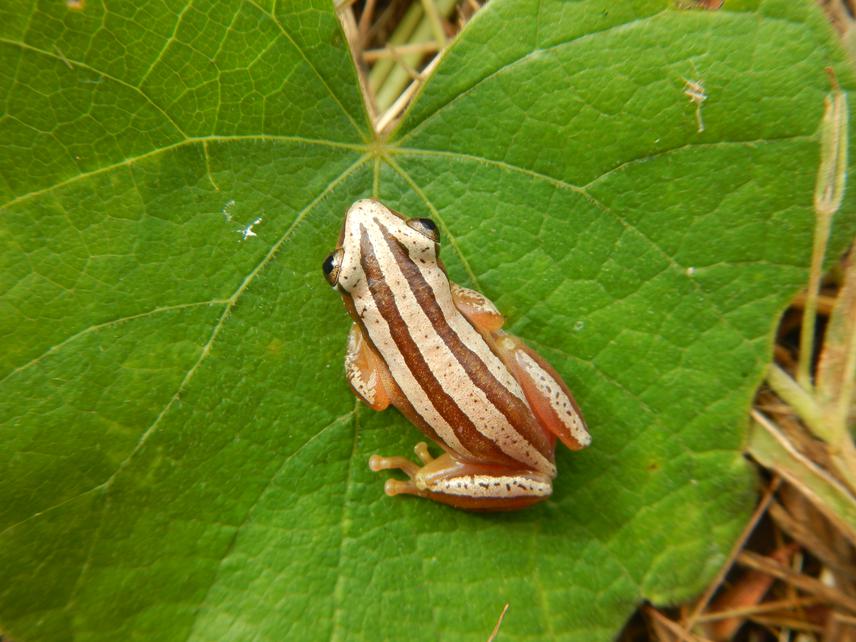Waswa Sadic Babyesiza
Documenting the effects of climate change on the genetic and species diversity and distribution of hepertiles in the Albertine rift, while updating the hepertilian species list of the study areas.

Afrixalus sp.
Studies on Amphibians and Reptiles (hepertiles) compared to other vertebrates in Uganda have been basic and comparative as compared to other vertebrates. There’s insufficient knowledge on how climate change has affected the ecology, diversity and the distribution of Hepertiles, particularly in developing countries (Stuart et al. 2004). Climate change is considered to be the most likely driver for change in reproductive seasons and phenology which in turn affects the diversity and distribution of different amphibian species. It has been noted however that it’s unlikely that the change in climate itself is the principal source of amphibian declines but rather an enabling factor (Stuart et al. 2004)
There is therefore need to evaluate the relationship between changes in the physical climate system and how hepertiles are adapting / evolving to changes in their environment.
The Major objective of this study is to assess the effect of climate change on the Genetic and species diversity of hepertiles in the Albertine rift. Other objectives include. More specifically we aim at providing an updated herpetile species list for the Albertine rift. With the current new methods of surveying amphibians and advanced ways of identification we anticipate new species and new records for the region.
Capacity building will be at the core of this project through training of students in hepertile field survey techniques. We also purpose to investigate other factors causing hepertile declines including parasitic interactions. We also hope to document species elevation distribution in montane regions this will help us understand how species have responded to climate change effects through comparisons with previous data. Study Areas will include the Rwenzori Mountains NP and Semliki Np. Methods such as Timed Constrained surveys, Visual encounter surveys, Audio/Acoustic surveys and pitfall traps will be used to trap and sample all hepertiles.
Data will be analysed using a series of statistical techniques in R statistical package, these include, trapping success, Shannon index for diversity, multipatt function and indval index for community composition, also Akike Information Criterion (AIC) will be used to determine the best models for the recorded variables as used in Quinn and Keough (2002).